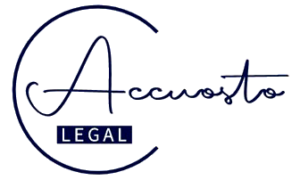The legal system provides us with different devices for prosecuting brand imitations.
Here we analyse the penal route which can be found in Article 274.1 of the Penal Code.
Fundamental elements of types of criminal offences
1.1.- “Industrial or commercial purposes” or, in other words, for profit
For a crime to be constituted, it is essential to have an economic purpose which is achievable either through industrial production or the commercialization of illegal goods (and not only in this way).
Creating a t-shirt with the Coca Cola logo to give to a friend is the sort of behavior which doesn’t fall within this sphere of applying Article 274 of the Penal Code.
1.2.-“Without owner’s consent” or, rather, without authorization
In order to use a brand legally, it has to be authorized by the owner through a contract. For example, a licence for use or a franchise.
In the case of the cessation of a brand, we would be in a situation of change of ownership, so authorization would not be necessary.
In contracts which grant authorization of brand use, very often, precise limits are indicated about quantities of products sold/produced. Infringement of these limits is also criminally relevant.
1.3.- “The right of registered industrial property according to brand legislation”
A brand illegally used for profitable purposes has to be a registered brand according to the Brand Law (Arts 2,11 and following). Article 274 of the Penal Code will not be applied in the case of an unregistered brand:
It’s crucial to present documents which prove the brand registration in the name of the person accusing.
It is not enough that the brand is registered, it has to be registered for those types of products.
1.4.-“Knowledge of registration” and, consequently, infraction of someone else’s right
The intent of the offender must be proven and his knowledge of the fact that the logo was registered.
Awareness of some regulations are considered common knowledge, even for those people without legal knowledge. We all know that taking a life or hitting someone or stealing is a crime, but infraction against regulations which protect industrial property are not so well known and recognized.
Knowledge of brand registration almost always has to be proven through compelling facts and periphery aspects, in other words, illustrating:
– Experience in the economic sector
– Technical knowledge of the offender
– The background
– Examination of the origin of the products
– Price
1.5.- “Any type of counterfeiting”
The definition of this paragraph begins with a list of specific conducts which are, in fact, illustrative examples of what the legislator has widely defined as ‘any type of infringement’’
1.6.- An identical or confusing distinctive logo’
On examining the interpretation of the regulation paragraphs, we have to bear in mind the principle ‘last resort in penal law’ – penal law being an extreme reaction within the legal system to illegalbehaviour.
In this way, it reflects that any falsification has to be exact: if it was dealing with an imitation the correct remedy would be a civil suit.
The courts consider Art. 274 of the Penal Code as protection not only for the owner of the brand but also for the consumer (although this is a matter of judgment, see para 1.2.3ª), so it can be presumed that the consumer is aware, that through buying an unoriginal product, there is no deception and consequently Art. 274 of the Penal Codeis not applied.
The mere intention (recognized especially due to the incredibly low price) doesnot reach the level of a penal falsification (counterfeit). According to Jurisprudence, whoever buys a product which is clearly not an original is someone would never buy a ‘good’ product. So a real loss would not exist for the brand owner (in fact, in practice, the damage is generated in the form of loss of prestige of the brand).
The jurisprudence of the provincial courts is not unanimous and there is no Supreme Court of Jurisprudence in this respect. But it is advisable before making an accusation to find out, together with experts, if it is a counterfeit or a simple imitation.
1.7.- “Importers of these products”
The profit which the precept refers to in respect of production and commercialisation must also be a part of the import.
2.- Penalties
2.1.-The offender “will be punished with a penalty of six months to two years in jail and a fine of twelve to twenty-four months”.
The reform of Organic Law 5/2010 added two possibilities
2.2 – Retail Distribution
When we look at “retail distribution, we bear in mind the characteristics of the guilty party and the reduced quantity of economic gain”. The sentence is a fine of three to six months or community service.
2.3.- Maximum financial benefit 400€
Penalty of permanent traceability of four to twelve days or a fine of one to two months
These new options will perhaps do what the principle of ‘utima ratio’ applies less strictly.
3-Conclusions
3.1.-For the prosecution
The principle of ‘ultima ratio’ should always be taken into account Therefore the penal route should only be followed when;
a) registration can be demonstrated for the brand
b) profit can be demonstrated
c) the accused’s awareness can be demonstrated
d) an expert has found the counterfeit and not the imitation
e) lack of authorization is clear or can be demonstrated
3.2.-For the defence
According to the cases, it is important;
a) to find out whether the claimant has documented the registration
b) to clarify for which type of product the registration of the logo refers
c) to be sure that the defendant cannot demonstrate his lack of awareness
d) to prove, through an expert report that the products are simple imitations and not counterfeits
e) to demonstrate that there was no risk of confusion by the consumer
f) to facilitate authorization if there is any
Aurora Grieco

